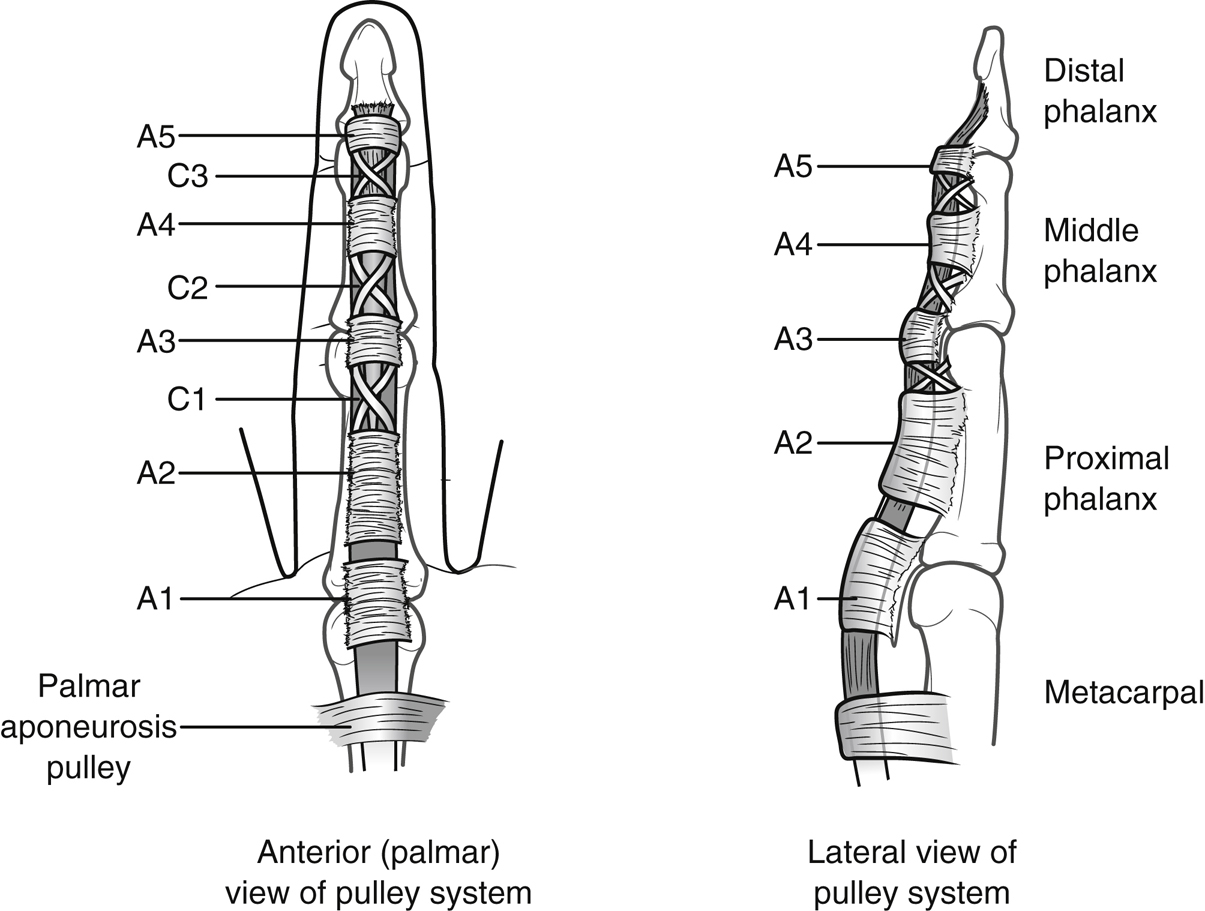Trigger Finger Release
Introduction
Trigger finger most commonly results from painful catching of flexor tendons at A1 pulley
Pathologic changes include stenosis of sheath due to inflammation and reactive nodule in flexor digitorum superficialis (FDS) tendon
Surgery can be performed using WALANT method (wide-awake local anesthesia no tourniquet)
Patient Selection
Special Populations/Situations
Children
Usually trigger thumb with inability to straighten interphalangeal joint
Spontaneous resolution possible; one may consider observation for 6 months in children younger than 3 years
Persistent triggering may require surgical release to prevent joint contractures
Diabetes
Lower success rate of nonsurgical treatment
Potential temporary hyperglycemic effect from steroid injection
In patients who have a preoperative proximal interphalangeal (PIP) joint contracture, this will likely persist even after success trigger digit release and may result in decreased patient postoperative satisfaction
Rheumatoid Arthritis
Primary pathology is synovitis within sheath, not stenosis of A1 pulley
Recommend early surgery with flexor synovectomy with or without release of ulnar slip of FDS; avoid A1 pulley release because it may result in more ulnar drift of digit
In patients in whom the inflammatory disease is well controlled and in whom there is no overt active synovitis or MCP deformity, most surgeons treat as idiopathic trigger finger and incise the A1 pulley alone
Distal Triggering
Rare triggering at A3 pulley with pain at PIP joint; flexor digitorum profundus is involved
Recommend A3 pulley excision
Proximal Interphalangeal Contracture
Typically this accompanies trigger digits that have been of long-standing duration. It may also be seen in the setting of those with concomitant diabetes mellitus
Before surgery, advise patient about residual contracture after A1 pulley release, and the possible need for excision of part of the superficialis tendon
Indications
Failed nonsurgical treatment with one to three steroid injections
Chronic triggering which has been present for >6 months
Those who decline corticosteroid injection but have bothersome triggering
Locked trigger digits
Contraindications
None
Preoperative Imaging
Ultrasonography and radiography are rarely indicated, but in select cases may be indicated only if diagnosis unclear (eg, arthritis, tumors)
Ultrasonography may show thickened A1 pulley or abnormality of flexor tendons
Relevant Surgical Anatomy

Figure 1Illustration depicts the flexor tendon sheath/pulley system anatomy.
Surface anatomy—Measured distance between digital palmar crease and PIP crease can be used to locate A1 pulley
Stay updated, free articles. Join our Telegram channel

Full access? Get Clinical Tree


